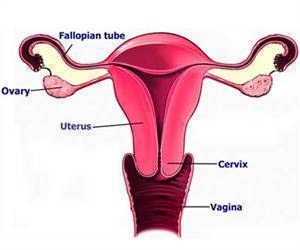A new study by Michigan medical researchers has developed a comprehensive “atlas” of various cell types and their genetic functions in the highly specialized fallopian tube, paving the way for new research on other diseases affecting this organ, including infertility and some cancers.
Using tissue samples from four postmenopausal women, Sahar Soo Hammood, PhD and Jun Li, PhD from the Department of Human Genetics led a team at the University of Michigan to analyze almost 60,000 cells by single-cell RNA sequencing. They used the data to classify the diversity of cells that make up the fallopian tube, including both the lining of the tube (epithelium) and the deep stromal layer containing the immune, blood, muscle, and other cells.
Hammoud and Li are joined by Ariella Shikanov, PhD, of the Department of Biomedical Engineering, Erica Marsh, MD, of the Department of Obstetrics and Gynecology, and team members Nicole Ulrich, MD, Yu-chi Shen, PhD, and Qianyi Ma, PhD and their project is part of the Human Cell Atlas Seed Networks, an international effort supported by the Chan-Zuckerberg Initiative to map all cells in the human body as a resource for better understanding health and disease.
Hammoud had already said, “it was known that there are about four epithelial cell types in the fallopian tube.” He also said, “we were able to reveal a deeper level of heterogeneity within these cells.“
Specifically, they identified 10 epithelial cell subtypes, including four of the finger-shaped hair cells responsible for moving the egg through the three sections of the fallopian tube before and after fertilization.
Cells within the fallopian tube are constantly changing, replenish themselves over time, and vary in number depending on a woman’s age, hormones, menstrual cycle, and the presence of disease. By comparing cells from women with healthy fallopian tubes to two samples from women with a fallopian tube disease known as hydrosalpinx (conventionally known as a blocked fallopian tube), researchers were able to identify which cells increased in number and which characteristics changed, as like a high degree of inflammation.
“Some of the cells are the cause of the disease state, and some others are the consequence; and now we know the patterns for individual cell types to figure out the molecular reasons for that pathology,” commented Li.
The team also discovered that some of the cell subtypes they defined in the fallopian tube can function as precursor cells, those that can regenerate multiple cell types in response to normal tissue turnover or to repair damage.
Hammoud said that one of the most surprising findings of the study was the discovery of cells with markers for the epithelial-mesenchymal transition, also known as EMT, a process not previously associated with the fallopian tube, through which a cell can, under certain circumstances, become cancerous.
It turns out that ovarian cancer may be a misnomer. The new study adds to mounting evidence that the root cause of ovarian cancer, the fifth leading cause of cancer death in women, may originate within the adjacent fallopian tube.
“The EMT process seems to be tightly regulated in the pre-menopausal woman,” she said. “One possible connection to cancer is that when there is misregulation in this population of cells in some unfortunate individuals, they may develop ovarian cancer. With EMT cells in the fallopian tube, you do have the predisposition right there.“
Cells from the fallopian tubes of women with hydrosalpinx gleaned additional information, specifically that the disease can lead to a type of scarring called fibrosis. The implication is that for women who don’t want their tubes removed. Hammoud noted, “you could think about treating them with anti-fibrotic drugs such as the ones used to treat lung fibrosis as a way to save their tubes during reproductive age.“
Compared to previous efforts, this study provides much more detailed information about cell types and functions in the tube for researchers interested in a range of questions about the normal female reproductive system. “This really is a basecamp to launch future studies,” says Li, including those looking at the effects of age, menstrual cycle, hormone therapy, and ancestral history on cell diversity and disease pathology.
Source: Medindia



